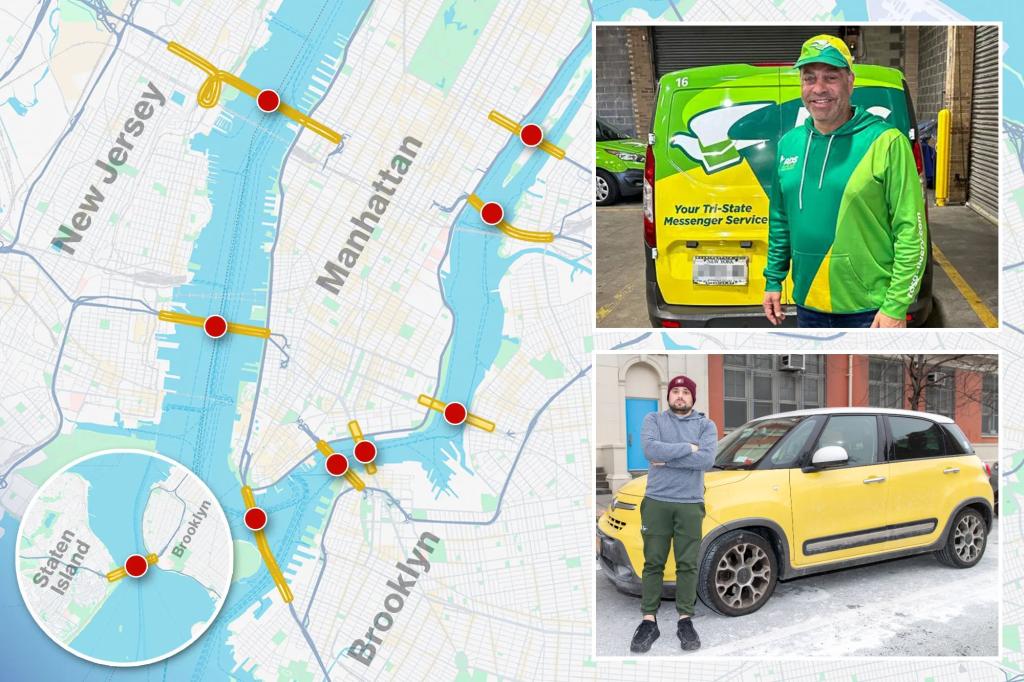The Looming Shadow of Congestion Pricing: A Deep Dive into the Impacts and Controversies
New York City is poised to implement a congestion pricing plan, a move fraught with controversy and anticipated consequences. Starting January 5th, vehicles entering Manhattan below 60th Street will face tolls ranging from $9 to $27, depending on the vehicle type and payment method. This adds to existing tolls for tunnels and bridges, creating a significant financial burden for drivers. Proponents, including Governor Kathy Hochul, argue the initiative is crucial for upgrading the city’s ailing public transportation system and reducing traffic congestion. However, a chorus of critics, ranging from small business owners to essential workers, contends that the plan is ill-conceived, financially devastating, and ultimately burdens the very people it purports to help.
The Metropolitan Transportation Authority (MTA) estimates that over 700,000 vehicles enter the congestion zone daily, moving at an average speed of just 7 mph. The anticipated revenue from congestion pricing is earmarked primarily for improving the subway and bus systems. The MTA projects that the tolls will deter approximately 100,000 vehicles daily. However, opponents question the efficacy of this projection and argue that the plan overlooks the crucial role played by commercial vehicles in the city’s economy. Delivery services, trucks, and buses will face repeated charges for each entry into the zone, a cost that is expected to be passed down to consumers. This raises concerns about the overall economic impact and the potential for increased prices for goods and services.
Small businesses are particularly vulnerable to the financial strain imposed by congestion pricing. Larry Zogby, CEO of RDS Delivery Service, estimates that the new tolls will add over a million dollars annually to his company’s expenses, making it their second-largest cost after payroll. He argues that this burden will inevitably be transferred to customers, further exacerbating the already high cost of living in New York City. The sentiment of being unfairly targeted is echoed by other small business owners, like plumber Paul Belli, who anticipates having to increase prices or add surcharges to offset the added costs. This ripple effect raises concerns about the potential for a widespread increase in prices across various sectors, impacting consumers and further burdening small businesses.
Essential workers, such as firefighters and teachers, express deep anxieties about the affordability and practicality of congestion pricing. A probationary firefighter shared concerns about the added expense and the logistical challenges of transporting necessary equipment via public transit, particularly in emergencies. The firefighters’ union has called for an exemption for its members, citing the potential safety risks of carrying carcinogen-covered gear on public transportation and the added physical strain of hauling heavy equipment during commutes. The MTA’s suggestion that the FDNY provide company cars or reimburse travel expenses has been met with skepticism and deemed inadequate. Similarly, Paul Caminiti, a teacher commuting from Staten Island, highlights the significant time difference between driving and using public transportation. The added cost of congestion pricing further discourages the use of personal vehicles, leaving commuters with limited and often less efficient options.
The legal landscape surrounding congestion pricing is also complex. Currently, ten lawsuits are pending in federal and state courts in New York and New Jersey, challenging the legality and feasibility of the tolling program. These legal challenges further underscore the deep divisions and uncertainties surrounding the plan’s implementation. Opponents argue that the plan was imposed without adequate public input and that it disproportionately impacts certain groups, including residents of outer boroughs and those who rely on their vehicles for work.
Congestion pricing is not a novel concept; cities like London, Milan, and Singapore have implemented similar systems. However, the specific circumstances of New York City, its complex transportation network, and its high cost of living present unique challenges. The true impact of congestion pricing in New York City remains to be seen. While proponents tout the potential benefits for public transportation and reduced traffic, critics fear a cascade of negative consequences, including increased costs for consumers, financial strain on small businesses, and logistical hurdles for essential workers. The ongoing legal battles and the widespread public dissent highlight the deep divisions surrounding this controversial policy, leaving the future of transportation in New York City uncertain.

